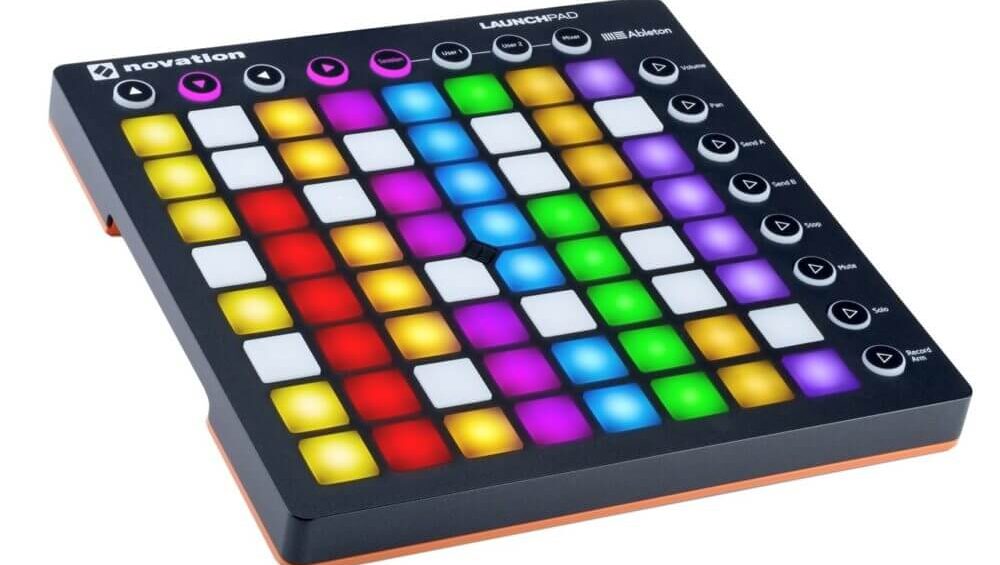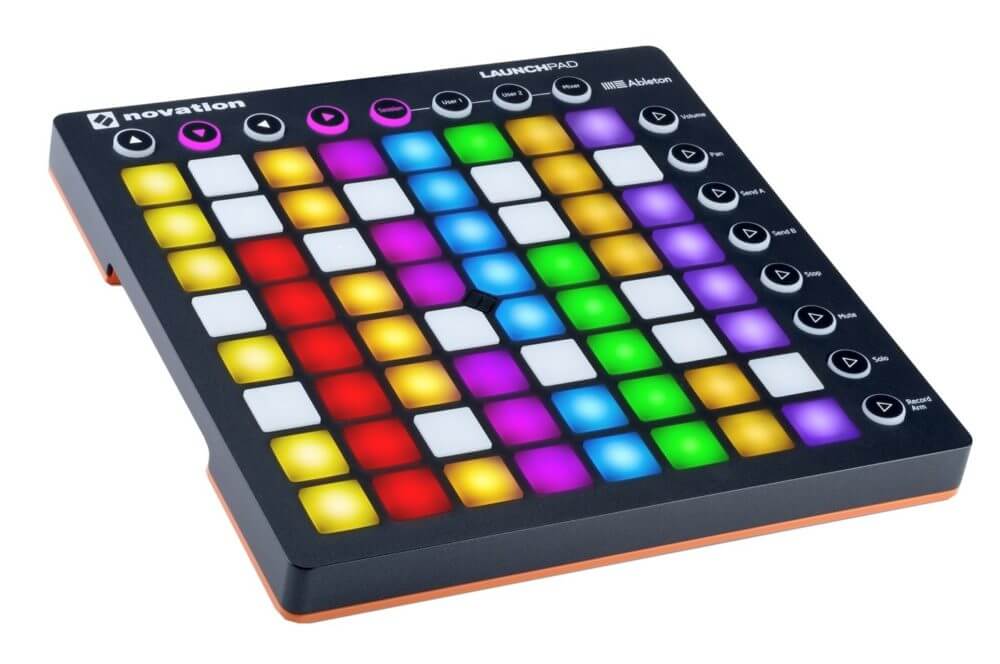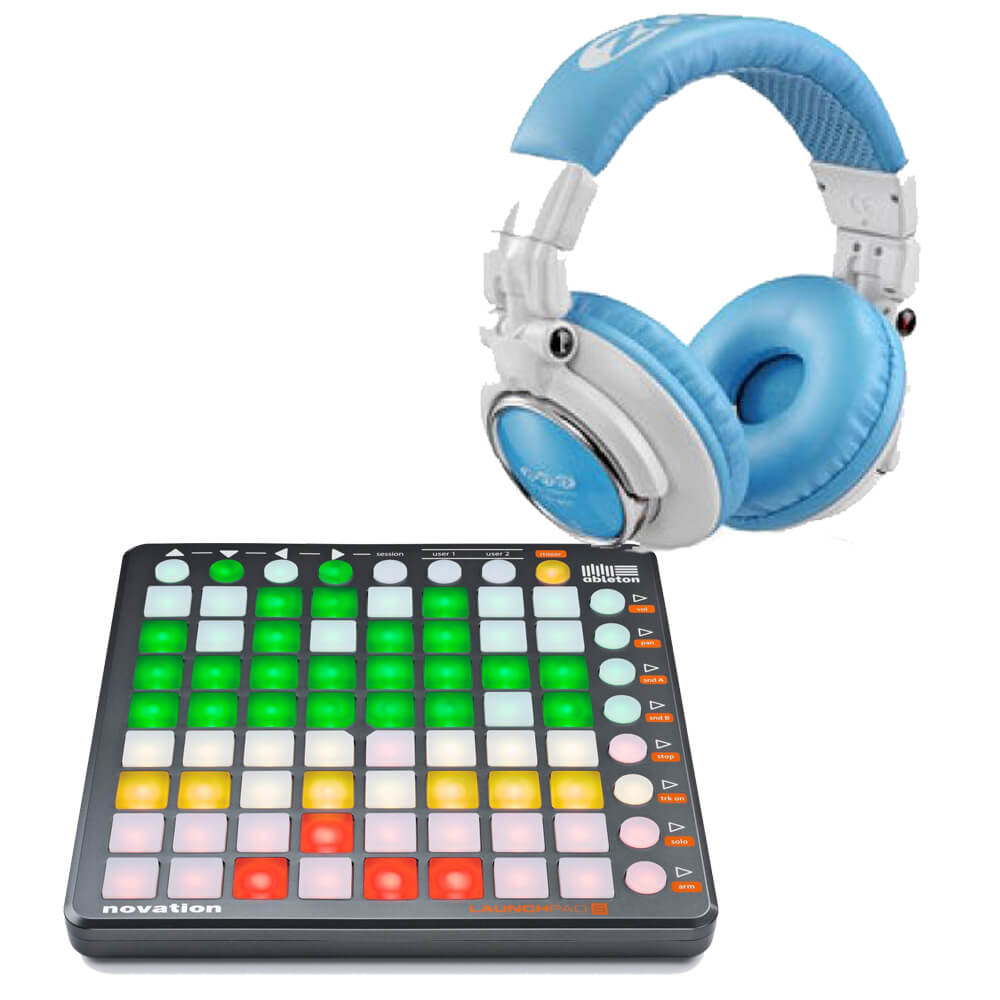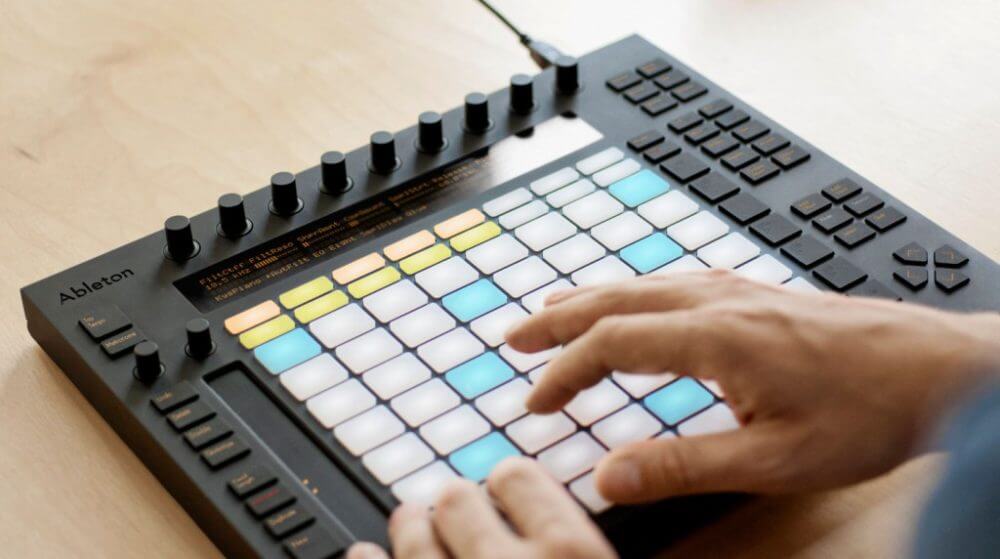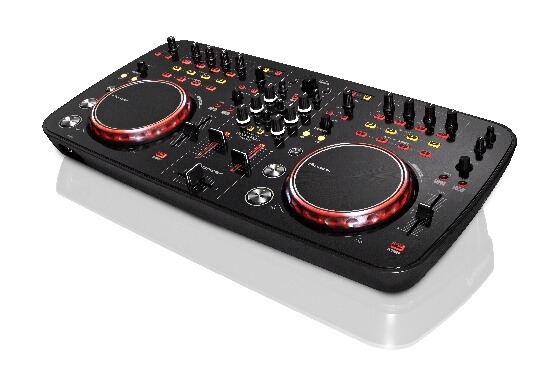If you’re a producer or engineer who hasn’t heard about the Novation Launchpad series by now, it’s likely you’ve either been dead, avoiding electronic music production at all costs, or living under a rock. (Or maybe some combination of the above.)
With the release of the latest iterations of these simple-yet-powerful control surfaces, Novation has taken the success of its Launchpad series to the next level, adding velocity-sensitive pads, built-in MIDI support, and Ableton Push-like controls for Live.
The Launchpad series builds on the success of Monome’s grid controllers, providing a bare-bones control surface that includes 64 pads only: no faders, no knobs, no piano-style keyboard.
If you haven’t tried a Launchpad out just yet, you may not get it immediately. Why would anyone use this? Who could possibly be the benefit of so few controls? But for the right user, there are several real advantages to this minimalist approach that we’ll explore in detail.
Features Overview
The first thing you may notice about both versions of the Launchpad is the lack of a traditional piano-style keyboard.
This may be a deal-breaking omission for some musicians, but there’s an argument to be made that the keyboard as we know it is an outdated, clunky piece of technology, and that the future lies in devices like these. While that argument is beyond the scope of this review, I have definitely found that the Launchpad controllers can be great for playing keyboard lines, once you get used to them.
One reason for this is that you don’t have to learn scales in quite the same way. The pads light up with colors representing the root note and the scale notes, which can be adjusted to any key you want. Therefore, an E Major scale has the same pad layout as an A minor scale. This is perfect for people who haven’t practiced all the scales and all the modes 8 hours a day for years.
Of course, some keyboard players and pianists may complain that this is devaluing their hard-won skills, but so what? The skill set is changing, and the best strategy is to adapt and expand, not to hide.
Even if you are a trained pianist, you should still check out the Launchpad series because using one of these things will take you out of your comfort zone and force your brain into a different creative place. Give it a try and you’ll find that you can shake up your approach to melodies and bass lines, just by using a different.
It’s true that there are many other controllers on the market that don’t sport a keyboard, but they usually have other obvious set of benefits—often an array of faders or knobs designed to mimic something: a mixing console, or a DJ setup for example.
But that leads us to the next major benefits of the Launchpad: Cost and size. For a device of this build quality, the Launchpad series controllers are affordable and small. Novation also has a Launchpad Mini which is tiny. Even the Pro (by far the biggest of the series) is not prohibitively large. You can still easily throw it in your backpack and go.
Couple this with a rugged build and you’ve got a well-functioning controller, without the worry and hassle of it breaking apart in your bag. By contrast, any decent keyboard-style controller will need its own case, which hardly makes them “grab n go.”
So far, all these are traits are common across the entire Launchpad series. So let’s take a detailed look at the newest breed, the Launchpad Pro.
Going Pro
A lot of articles have been written comparing the Launchpad Pro to Ableton’s Push controller. But with a closer look at the two and it becomes obvious that this is a bit of a stretch.
Push has a lot more in the way of at-a-glance features like knobs, screen, ribbon controller, and additional more buttons. But does that mean that it’s necessarily the better controller for you?
All those extra features on the Push come at a cost, both financial and spacial. First, the Push is HUGE. Way too big to just throw in a bag and run. It also costs $599 at the store, double what you’d expect to pay for the Launchpad Pro. And, those knobs mean you have to be worried about things breaking. That’s a lot of things.
This is where the Launchpad Pro comes in. Although the Push is a great device in its own right, the Launchpad fills a different niche, and should be seen of what it is:Not a Push emulation with fewer features, but rather, a continuation of the Launchpad family—he next logical step, so to speak. Obvious additions include velocity-sensitive pads, and some extra buttons for more control, without cluttering the device or compromising on size, cost, durability and ease of travel.
Even if you have an Ableton Push or similar control, but need a device that works well on stage, the Launchpad Pro may answer your needs. The interfaces are similar enough that you could go from the Push in the studio to the Launchpad Pro on stage without much of a learning curve.
Velocity
A much-touted feature of the Launchpad Pro is the introduction of velocity sensitive pads. They work much as you would hope (and expect) them to: hit the pad harder, and the sound plays louder. (Or provides whatever other change in variable you may have assigned to be controlled by velocity).
There are four velocity curves: Low, Medium, High, and Off, which change how your key presses will affect the velocity. The pad feels great, and the velocity sensitivity is responsive. It’s easy to change the velocity curves as well, which makes switching to a more old school, no-velocity input a snap.
This is all pretty obvious so far, but Novation has found an additional creative ways to use the pads and apply the new velocity feature. Velocity can also control the speed of change in any parameter. Here’s how that works:
One of the classic features of the Launchpad series has been the ability to use the pads to control levels of different sources. For example, track volume can be controlled by making a selection from a range of 8 illuminated pads on columns on the device.
In the past, these changes could only be adjusted as in jumps between 8 possible level settings.. The result was that the a change from low to high level could be pretty jarring, as there was no way to increase the level smoothly.
On the Launchpad Pro, this issue has been addressed: Hit the pad hard and the change is more immediate, while a light tap results in a slow glide from one setting to the next. This works well in practice, and while it does not totally replace a good knob or fader to turn, it is definitely more useful than old way approach.
Built-in MIDI
Another welcome addition to the new Launchpad Pro is the inclusion of MIDI compatibility straight out of the box. In the past, to use MIDI on any pad device like this, you would need to run through some kind of software. Now that the MIDI features are built into the device, you can just plug it into a keyboard and go.
Why would you want to do this? As mentioned earlier, traditional piano-style keys are great for many musicians, but what about the ones who aren’t the best at playing on a traditional piano keyboard? Should they just be left out of inventing new melodic lines and making coming up with interesting rhythms? “Not at all”, has been Novation’s answer.
Not only is this a great feature for keyboard novices, but experienced players can benefit as well. There’s nothing better for jolting your creativity than setting yourself up with a new approach to wrap your mind around.
If you are a seasoned keyboard player, try out the Launchpad (or any device like it) and you’ll see: although you won’t be able to play Mozart or Herbie Hancock on it like you would on a traditional keyboard, the melodies and bass lines you do write will probably be quite different, and quite possibly more interesting because of this change of scenery. When “thinking outside the box” becomes the tired old norm, perhaps try “thinking outside the keys.”
When plugged in via USB, the MIDI functions as you would expect with any other USB keyboard.
Notes Mode
The “Notes” mode on the Launchpad Pro allows you to play your virtual instruments more like a piano, but here it’s a little awkward and limited compared to Ableton’s Push.
The way Novation has set things up, the illuminated pads represent the white keys on a traditional keyboard, and the dark pads represent the black keys. The purple pad represents the root note of the scale. This is “C” by default, but the left/right selectors can move the root note up and down by half steps, and the up/down selectors by octaves.
Unfortunately, at this time, this is the only way to use the Launchpad: in chromatic scale mode. If you have used a Push, you will notice immediately that by comparison, a chromatic scale lock-in is not nearly as much fun as having access to different scale types with the push of a button.
When a Drum Rack is inserted on the MIDI Track, the Notes mode changes automatically from a chromatic keyboard setup into a pad setup, which more directly maps the way Drum Racks are set up in Ableton Live. Hopefully there will be a future update that adds in programming capabilities, alá Push.
Speaking of which… There is a program out for Launchpad Classic, Mini and ”S” that will emulate the Push way of doing things, but it has yet to be updated for the Launchpad Pro. If you own any of these devices, you should definitely check out this 3rd-party software from Native Kontrol.
Take It To Go
As with prior Launchpad hardware, the Pro is ruggedly built and ready to be taken anywhere.
A welcome new feature that Novation has been putting on all their Launchpad-series devices is a full rubber base. Instead of feet, there is a complete rubber bottom, which means it can be placed anywhere and won’t move.
This is great for going on the road, because you can never be quite sure what kind of environment you’ll find yourself in and what kind of surface you’ll be playing on.
Live Capable
Although Novation are probably going after a wider market at this point with the added MIDI features, most of the people who will be interested in buying a Launchpad Pro are probably Ableton Live users. Don’t worry, Novation haven’t forgotten you!
With the standard Launchpad controllers, there is an extra row of buttons across the top, and a column down the right side for accessing extra features such as mix levels and Notes Mode. The Launchpad Pro has those, plus two extra lines of buttons, one down the left side, and one across the bottom. These two extra lines don’t add much to the size or portability of the unit, but do add a wealth of features that really up the Live control side of the device.
The Live-specific controls live on the Left column. Here, you have buttons to access things like Click On/Off, Undo (and Redo), Session Record, Quantise (the Novation spelling for quantize, in case you were wondering—they’re British), and others.
These buttons really help streamline the music-making process with the Launchpad Pro. Quickly record a clip, quantize it, and then duplicate it to add some other elements into the mix. The setup is intuitive, and doesn’t have a steep learning curve as long as you’re familiar with how Live works. You will find yourself up and running in no time.
These buttons, in conjunction with the new velocity-sensitive movements make using the Launchpad Pro a much better solution for playing with aspects that would traditionally be assigned to knobs or faders on a standard MIDI controller than the earlier Launchpad counterparts.
Summing It Up
Pros:
- Velocity-sensitive pads
- Feature-specific controls for Live
- Built-in MIDI
- Rugged construction
Cons:
- Only chromatic scale accessible at time of review
- Fewer physical controls than some competing devices
The Bottom Line:
- Get it. Even if you don’t use Ableton Live as your primary DAW, the MIDI capabilities allow you to control keyboards, sound modules, and even other DAWs. If you are using Live, this newest addition to the Launchpad family is well worth the money.
Extras: The Missing Knob
If you must have knobs and faders (who doesn’t), then give Novation’s Launch Control XL a look. It’s a great addition to the Launchpad line of products, and adds the much-needed knobs and faders, but keeps the same footprint as the original Launchpad. In this reviewer’s opinion, a Launchpad or Launchpad Pro alongside the Launch Control XL is a great setup for stage or studio.
– See more at: https://www.sonicscoop.com/2015/08/05/review-novation-launchpad-pro/#sthash.6cHxmIGY.dpuf

